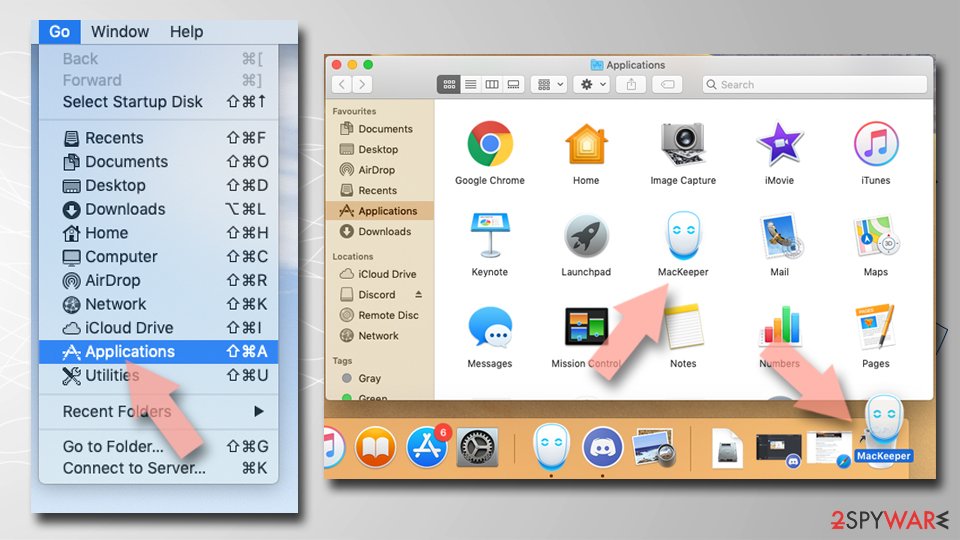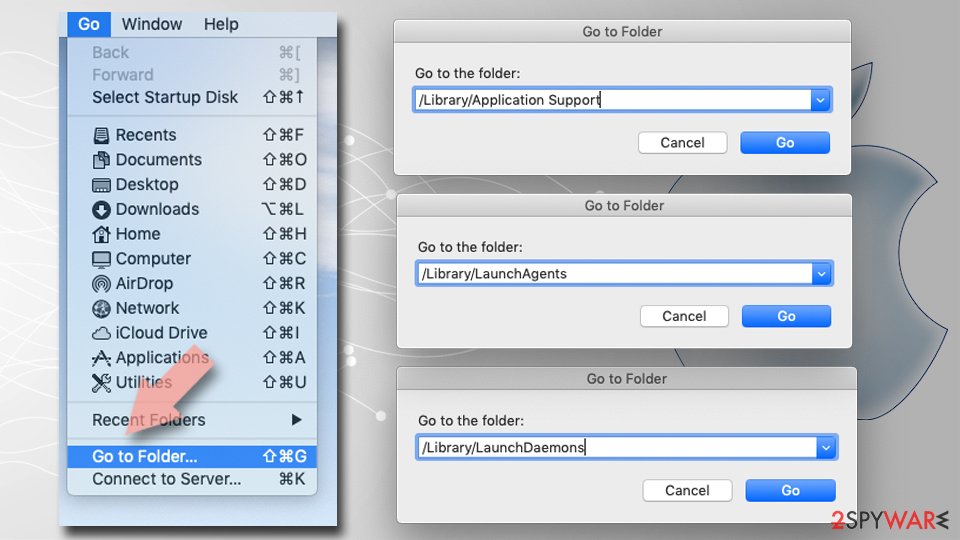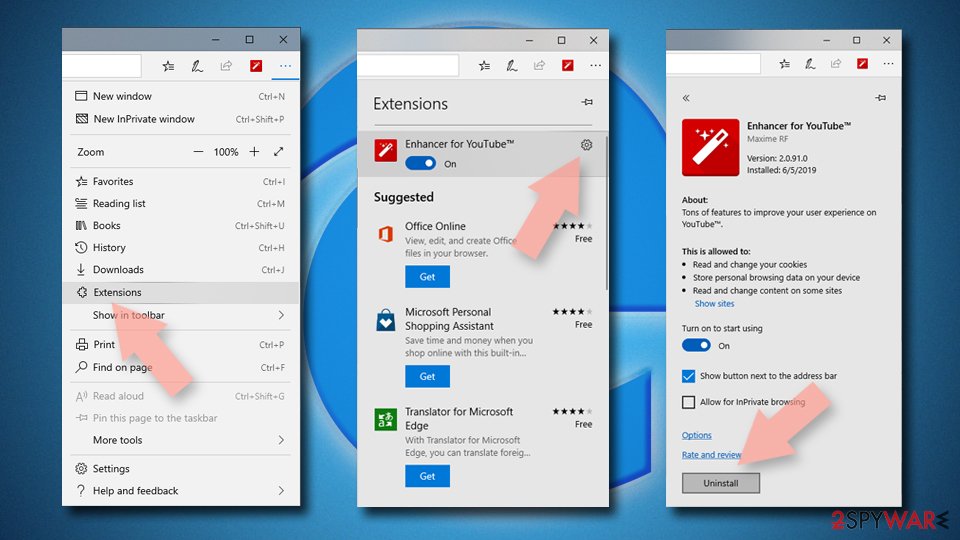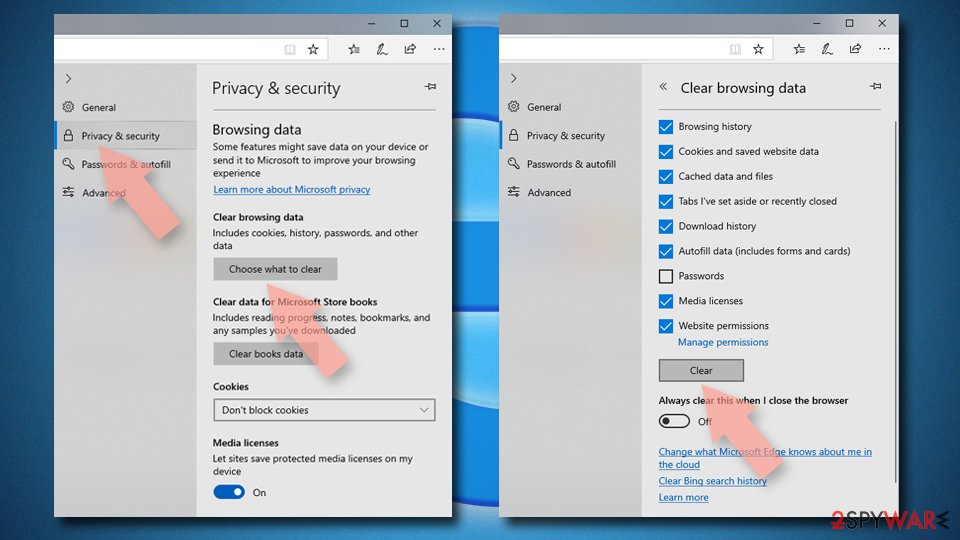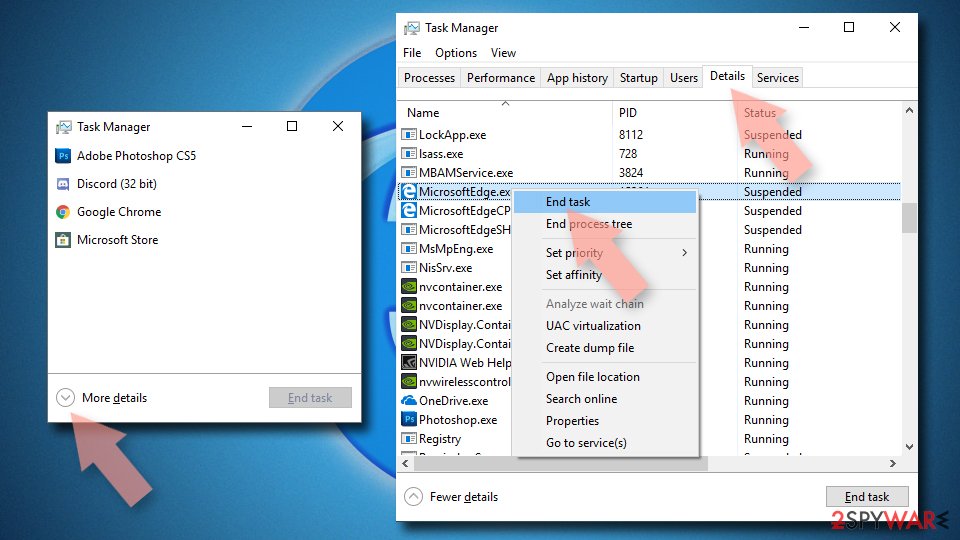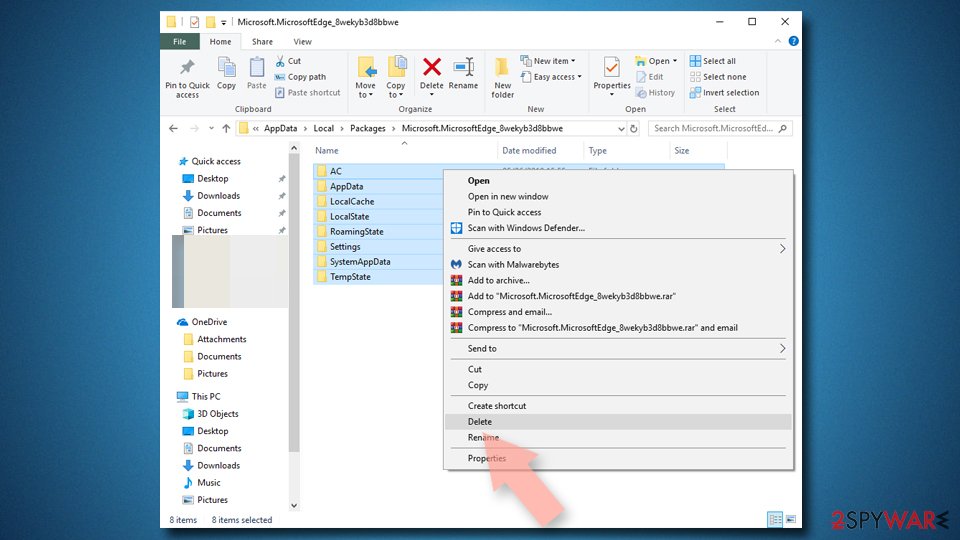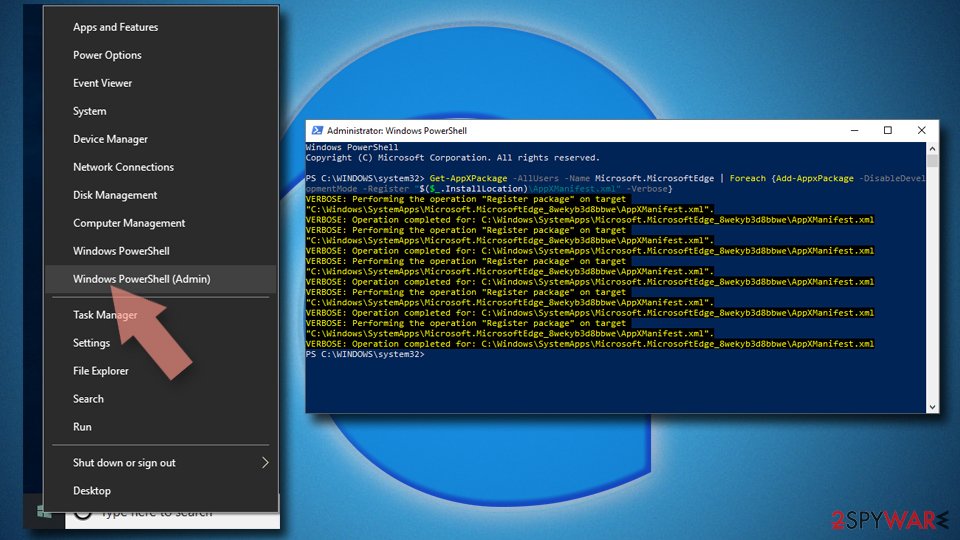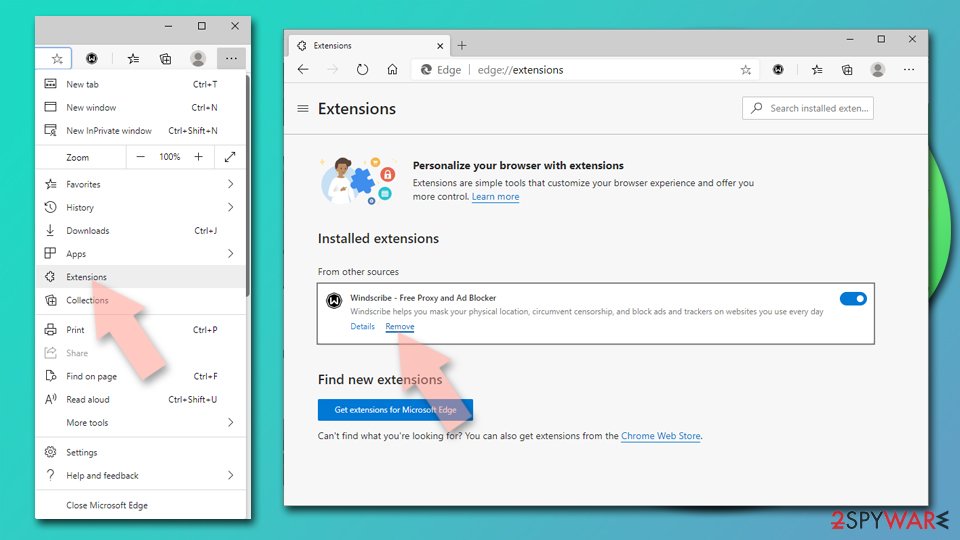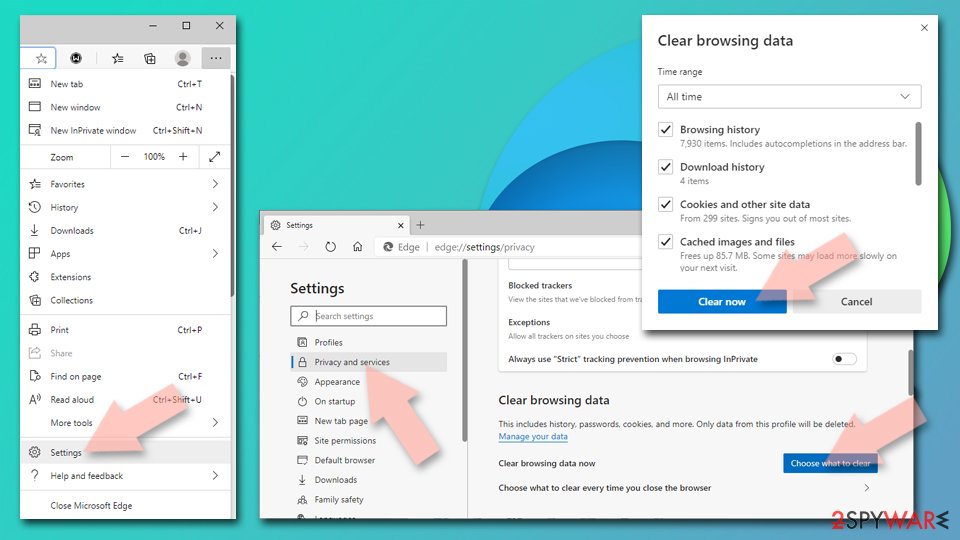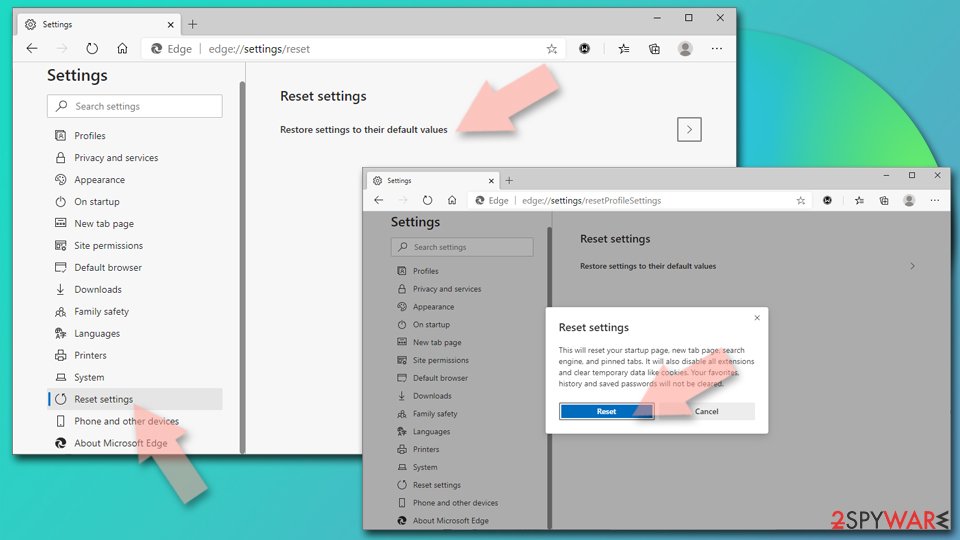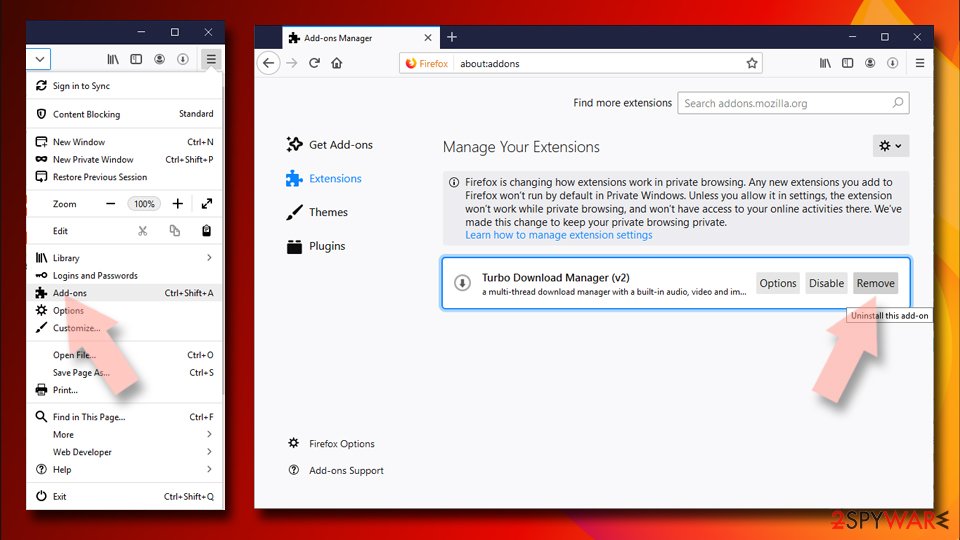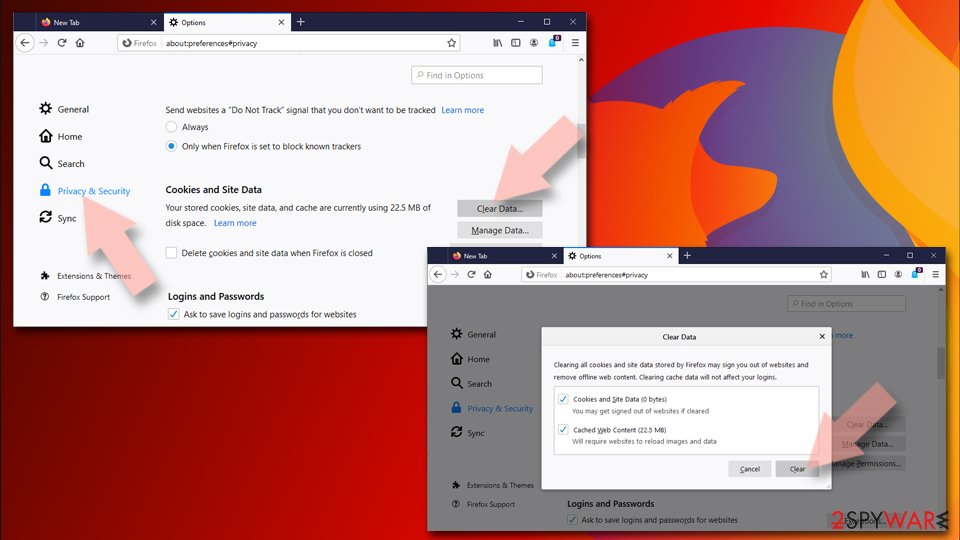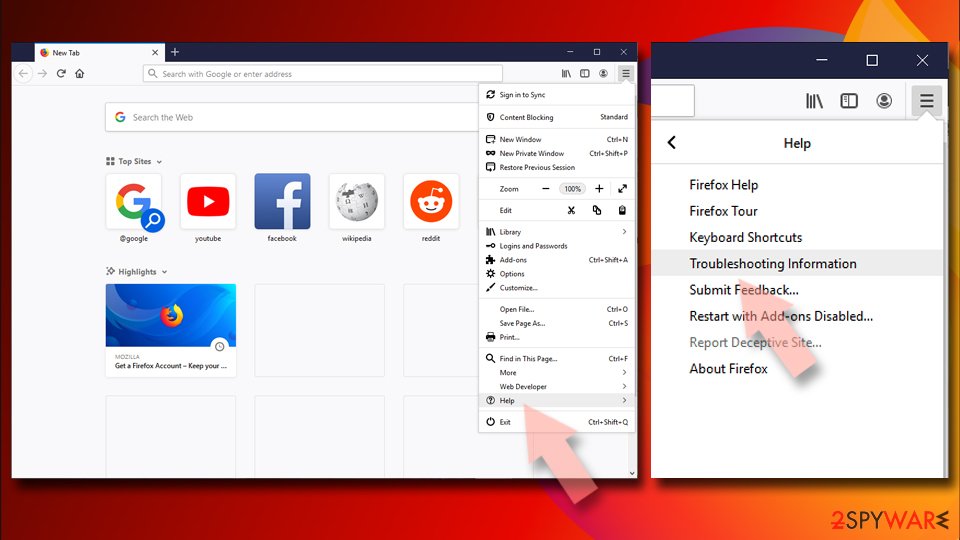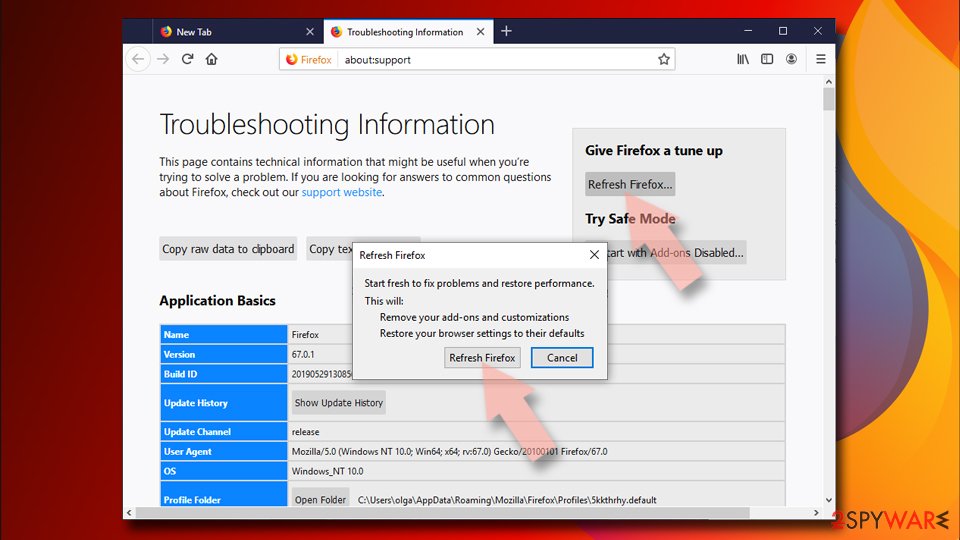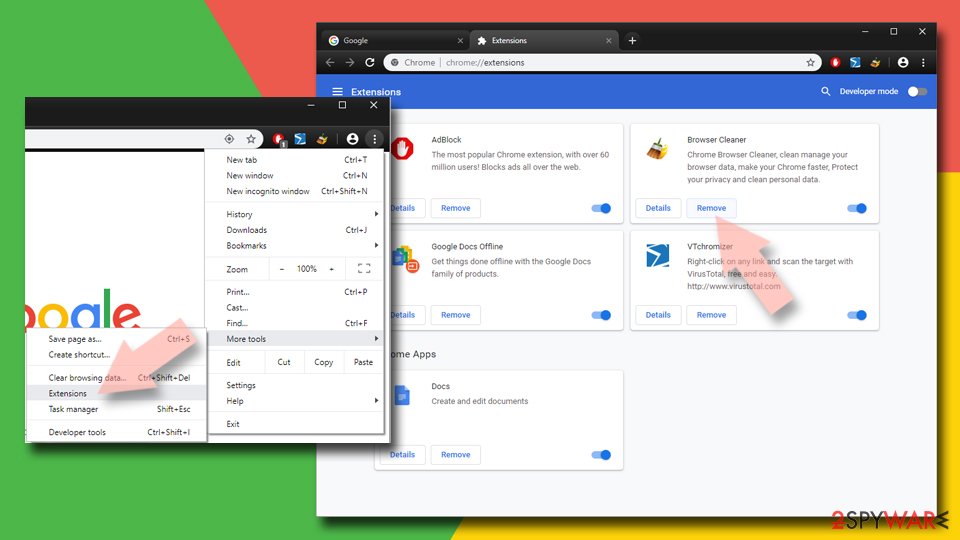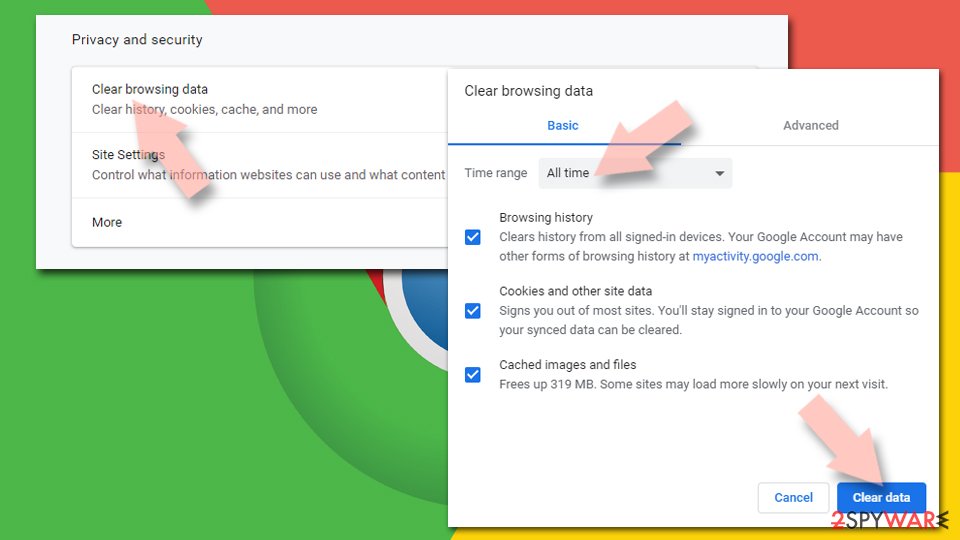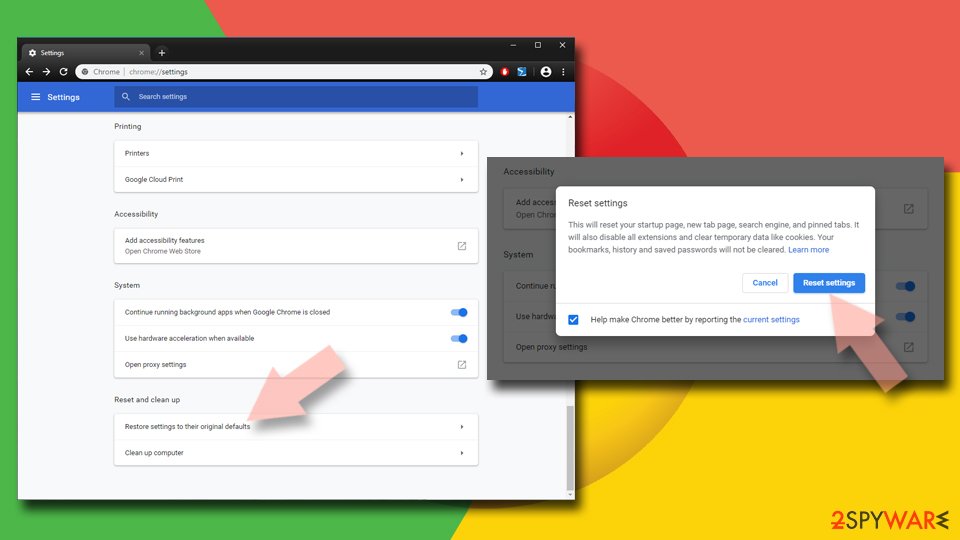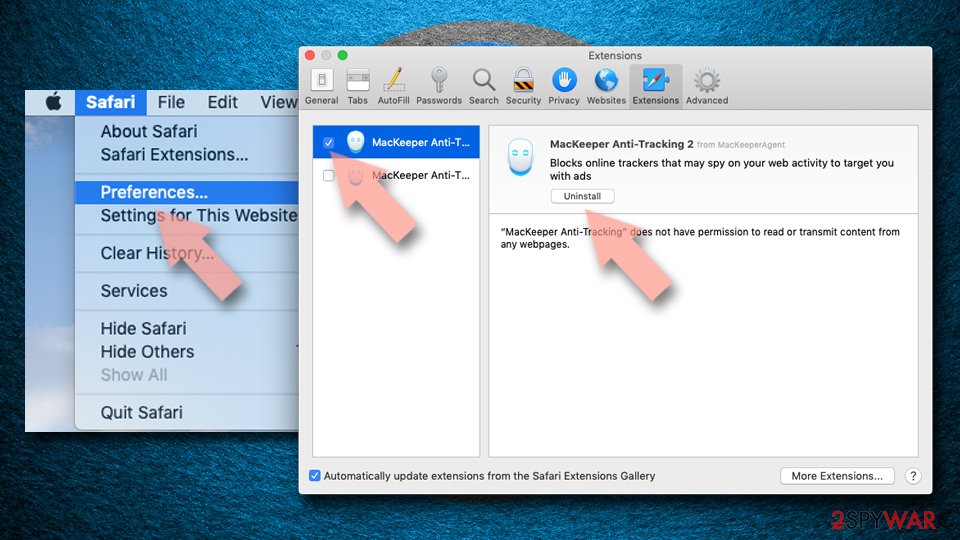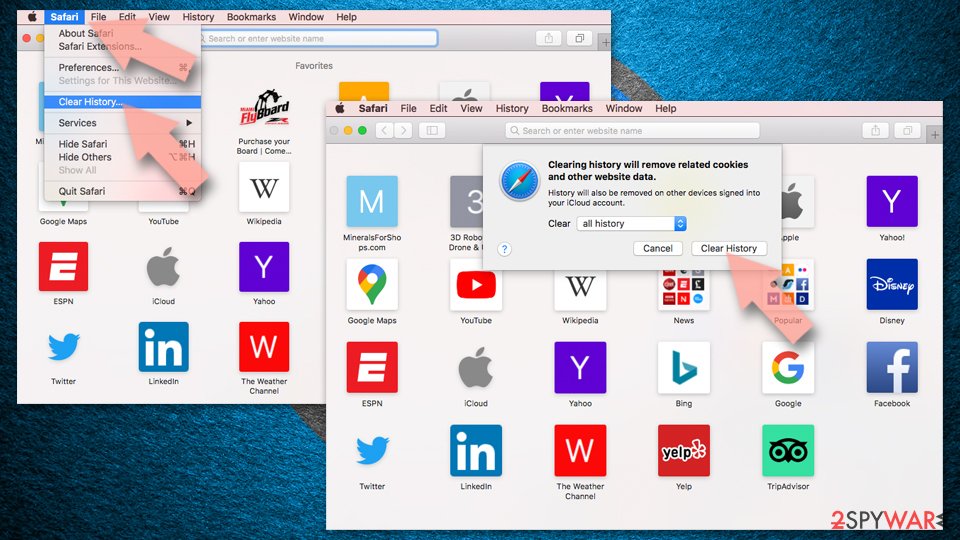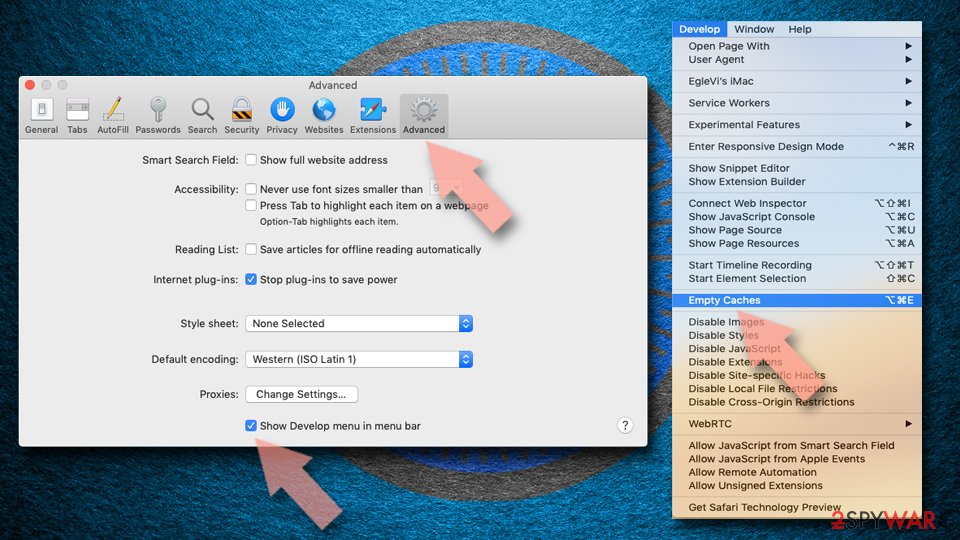“YOUR APPLE COMPUTER HAS BEEN LOCKED” Tech Support Scam virus (Support Scam Virus) - Removal Guide
“YOUR APPLE COMPUTER HAS BEEN LOCKED” Tech Support Scam virus Removal Guide
What is “YOUR APPLE COMPUTER HAS BEEN LOCKED” Tech Support Scam virus?
“YOUR APPLE COMPUTER HAS BEEN LOCKED” Tech Support Scam virus
Received a suspicious pop-up saying “YOUR APPLE COMPUTER HAS BEEN LOCKED[1]”? Wondering if someone has actually decided to lock iPhone Safari “for security reasons”? If so, you should not rush to call the number provided on the screen of your Mac, iPad or iPhone because you are simply dealing with tech support scammers[2] who are trying to take advantage of unprofessional computer users who are trying to keep malware away from their devices. Safari lock is simply a scam[3] and you should not fall for it. These deceptive messages can compromise your iPhone as well as iPad or Mac computer – none of these devices is resistant to this type of malware yet[4]. The scam is based on dozens of phishing websites that trigger official-looking alerts stating that user’s “Apple computer has been blocked.” Scammers typically use Google Chrome or Safari to display these messages, but other web browsers may be affected as well. Scammers try to manipulate victim’s feelings and scare him/her enough to force him/her call the provided “Apple Care” or “Apple Support” number without thinking. However, calling the provided number simply connects the victim to an underground office of criminals who pose as Apple’s employees although they are not.
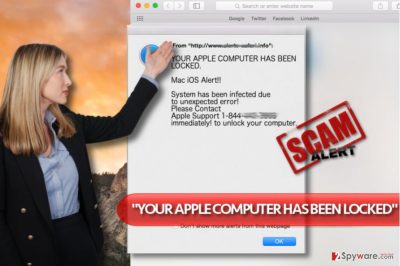
What is more, it has been noticed that the majority of such offices are detected in India, so if you have at least a slightest suspicion that you are dealing with tech support scam and the so-called “certified Apple technician” speaks with a strong Indian accent and asks you to reveal personal information or download and install some remote access programs, better hang up. First of all, real Apple or Microsoft technicians would never ask you to provide sensitive information over the phone. Scammers might try to use your credit card details or your personal information for malevolent purposes, so be aware of tricks they use. For example, they might try to sell you some suspicious “security” software[5] for huge amounts of money ($100-$300 or more), sign in some suspicious portals that look like real Apple websites (phishing pages) using your Apple ID and so on. Remember that by logging into such portals you will simply send your login details directly to criminals servers. If you suspect that your Mac has been affected by “YOUR APPLE COMPUTER HAS BEEN LOCKED” virus, run a system scan using Malwarebytes and remove the infection. If you can’t remove it with the help of this program, we suggest following instructions presented below the article.
How did I get infected with such malware?
“YOUR APPLE COMPUTER HAS BEEN LOCKED” hijack takes place when the user visits compromised websites, downloads or installs questionable files and in many other cases. If you noticed that your Mac/other iOS device started to act suspiciously, you should not ignore it and take actions immediately to solve the problem. The main advice from us is to watch what kind of content you access online. Remember that adult-oriented websites, gambling web pages, and especially websites that stock collections of wallpapers are considered dangerous and most likely to infect your PC with malware. These sites make it to the list of the top hazardous places on the Internet. We advise you to be careful when browsing on one and avoid clicking on banners placed in them, and never explore offers that appear in pop-up or pop-under advertisements.
How to fix my computer after “YOUR APPLE COMPUTER HAS BEEN LOCKED” attack?
If you wish to remove “YOUR APPLE COMPUTER HAS BEEN LOCKED” virus shortly, run a system scan with Malwarebytes program. It is compatible with Mac OS and it will help you to clean the system from suspicious components. However, you can also try to delete the infection manually. Use “YOUR APPLE COMPUTER HAS BEEN LOCKED” removal instructions provided by our support team – you will find these below.
How to remove “YOUR APPLE COMPUTER HAS BEEN LOCKED” Tech Support Scam virus from your iPhone/iPad:
1. Press down Sleep/Wake button on your device, and also Home button (both at the same time)! Hold down these buttons until the device turns off.
2. Wait a little and then turn the device back on.
3. Delete browsing related information from your device: just go to Settings > Safari > Clear History > Clear Cookies and Data/Clear History and Website Data.
To learn how to uninstall the virus from Mac OS, see instructions provided below.
You may remove virus damage with a help of FortectIntego. SpyHunter 5Combo Cleaner and Malwarebytes are recommended to detect potentially unwanted programs and viruses with all their files and registry entries that are related to them.
Getting rid of “YOUR APPLE COMPUTER HAS BEEN LOCKED” Tech Support Scam virus. Follow these steps
Delete from macOS
Uninstall all suspicious apps from your Mac. You might need to take a look at these instructions to do everything in a correct order. First of all, close Safari and reopen it with Shift key held down.
Remove items from Applications folder:
- From the menu bar, select Go > Applications.
- In the Applications folder, look for all related entries.
- Click on the app and drag it to Trash (or right-click and pick Move to Trash)

To fully remove an unwanted app, you need to access Application Support, LaunchAgents, and LaunchDaemons folders and delete relevant files:
- Select Go > Go to Folder.
- Enter /Library/Application Support and click Go or press Enter.
- In the Application Support folder, look for any dubious entries and then delete them.
- Now enter /Library/LaunchAgents and /Library/LaunchDaemons folders the same way and terminate all the related .plist files.

Remove from Microsoft Edge
Delete unwanted extensions from MS Edge:
- Select Menu (three horizontal dots at the top-right of the browser window) and pick Extensions.
- From the list, pick the extension and click on the Gear icon.
- Click on Uninstall at the bottom.

Clear cookies and other browser data:
- Click on the Menu (three horizontal dots at the top-right of the browser window) and select Privacy & security.
- Under Clear browsing data, pick Choose what to clear.
- Select everything (apart from passwords, although you might want to include Media licenses as well, if applicable) and click on Clear.

Restore new tab and homepage settings:
- Click the menu icon and choose Settings.
- Then find On startup section.
- Click Disable if you found any suspicious domain.
Reset MS Edge if the above steps did not work:
- Press on Ctrl + Shift + Esc to open Task Manager.
- Click on More details arrow at the bottom of the window.
- Select Details tab.
- Now scroll down and locate every entry with Microsoft Edge name in it. Right-click on each of them and select End Task to stop MS Edge from running.

If this solution failed to help you, you need to use an advanced Edge reset method. Note that you need to backup your data before proceeding.
- Find the following folder on your computer: C:\\Users\\%username%\\AppData\\Local\\Packages\\Microsoft.MicrosoftEdge_8wekyb3d8bbwe.
- Press Ctrl + A on your keyboard to select all folders.
- Right-click on them and pick Delete

- Now right-click on the Start button and pick Windows PowerShell (Admin).
- When the new window opens, copy and paste the following command, and then press Enter:
Get-AppXPackage -AllUsers -Name Microsoft.MicrosoftEdge | Foreach {Add-AppxPackage -DisableDevelopmentMode -Register “$($_.InstallLocation)\\AppXManifest.xml” -Verbose

Instructions for Chromium-based Edge
Delete extensions from MS Edge (Chromium):
- Open Edge and click select Settings > Extensions.
- Delete unwanted extensions by clicking Remove.

Clear cache and site data:
- Click on Menu and go to Settings.
- Select Privacy, search and services.
- Under Clear browsing data, pick Choose what to clear.
- Under Time range, pick All time.
- Select Clear now.

Reset Chromium-based MS Edge:
- Click on Menu and select Settings.
- On the left side, pick Reset settings.
- Select Restore settings to their default values.
- Confirm with Reset.

Remove from Mozilla Firefox (FF)
Remove dangerous extensions:
- Open Mozilla Firefox browser and click on the Menu (three horizontal lines at the top-right of the window).
- Select Add-ons.
- In here, select unwanted plugin and click Remove.

Reset the homepage:
- Click three horizontal lines at the top right corner to open the menu.
- Choose Options.
- Under Home options, enter your preferred site that will open every time you newly open the Mozilla Firefox.
Clear cookies and site data:
- Click Menu and pick Settings.
- Go to Privacy & Security section.
- Scroll down to locate Cookies and Site Data.
- Click on Clear Data…
- Select Cookies and Site Data, as well as Cached Web Content and press Clear.

Reset Mozilla Firefox
If clearing the browser as explained above did not help, reset Mozilla Firefox:
- Open Mozilla Firefox browser and click the Menu.
- Go to Help and then choose Troubleshooting Information.

- Under Give Firefox a tune up section, click on Refresh Firefox…
- Once the pop-up shows up, confirm the action by pressing on Refresh Firefox.

Remove from Google Chrome
Delete malicious extensions from Google Chrome:
- Open Google Chrome, click on the Menu (three vertical dots at the top-right corner) and select More tools > Extensions.
- In the newly opened window, you will see all the installed extensions. Uninstall all the suspicious plugins that might be related to the unwanted program by clicking Remove.

Clear cache and web data from Chrome:
- Click on Menu and pick Settings.
- Under Privacy and security, select Clear browsing data.
- Select Browsing history, Cookies and other site data, as well as Cached images and files.
- Click Clear data.

Change your homepage:
- Click menu and choose Settings.
- Look for a suspicious site in the On startup section.
- Click on Open a specific or set of pages and click on three dots to find the Remove option.
Reset Google Chrome:
If the previous methods did not help you, reset Google Chrome to eliminate all the unwanted components:
- Click on Menu and select Settings.
- In the Settings, scroll down and click Advanced.
- Scroll down and locate Reset and clean up section.
- Now click Restore settings to their original defaults.
- Confirm with Reset settings.

Delete from Safari
Remove unwanted extensions from Safari:
- Click Safari > Preferences…
- In the new window, pick Extensions.
- Select the unwanted extension and select Uninstall.

Clear cookies and other website data from Safari:
- Click Safari > Clear History…
- From the drop-down menu under Clear, pick all history.
- Confirm with Clear History.

Reset Safari if the above-mentioned steps did not help you:
- Click Safari > Preferences…
- Go to Advanced tab.
- Tick the Show Develop menu in menu bar.
- From the menu bar, click Develop, and then select Empty Caches.

After uninstalling this potentially unwanted program (PUP) and fixing each of your web browsers, we recommend you to scan your PC system with a reputable anti-spyware. This will help you to get rid of “YOUR APPLE COMPUTER HAS BEEN LOCKED” Tech Support Scam registry traces and will also identify related parasites or possible malware infections on your computer. For that you can use our top-rated malware remover: FortectIntego, SpyHunter 5Combo Cleaner or Malwarebytes.
How to prevent from getting malware
Protect your privacy – employ a VPN
There are several ways how to make your online time more private – you can access an incognito tab. However, there is no secret that even in this mode, you are tracked for advertising purposes. There is a way to add an extra layer of protection and create a completely anonymous web browsing practice with the help of Private Internet Access VPN. This software reroutes traffic through different servers, thus leaving your IP address and geolocation in disguise. Besides, it is based on a strict no-log policy, meaning that no data will be recorded, leaked, and available for both first and third parties. The combination of a secure web browser and Private Internet Access VPN will let you browse the Internet without a feeling of being spied or targeted by criminals.
No backups? No problem. Use a data recovery tool
If you wonder how data loss can occur, you should not look any further for answers – human errors, malware attacks, hardware failures, power cuts, natural disasters, or even simple negligence. In some cases, lost files are extremely important, and many straight out panic when such an unfortunate course of events happen. Due to this, you should always ensure that you prepare proper data backups on a regular basis.
If you were caught by surprise and did not have any backups to restore your files from, not everything is lost. Data Recovery Pro is one of the leading file recovery solutions you can find on the market – it is likely to restore even lost emails or data located on an external device.
- ^ Scam Alert: Received an awful beeping message saying "YOUR APPLE COMPUTER HAS BEEN LOCKED". Discussions - Apple. Official Apple Support Communities.
- ^ Tech Support Scams – Help . Malwarebytes Labs. Official Malwarebytes Security Blog.
- ^ Just Hang Up: Why You Shouldn’t Taunt Fake Tech Support Scammers. MakeUseOf. Technology, Simplified. Your guide in modern tech.
- ^ John Galt. Phony "tech support" / "ransomware" popups and web pages. Discussions - Apple. Official Apple Support Communities.
- ^ Tech Support Scams. Federal Trade Commission. Consumer Information.
